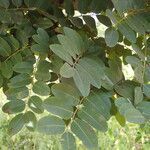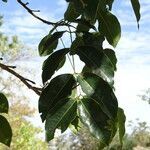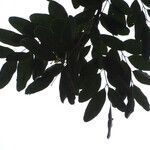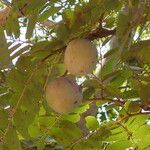Tree up to 20 m. tall; bole often crooked; buttresses short or absent; crown rounded.. Apart from the characters given in the key, very similar to K. anthotheca and K. grandifoliola, but usually smaller in all its parts.. Leaves up to 25 cm. long, bright green and shining above, pale greyish green beneath; leaflets 4–10.. Panicles up to 20 cm. long.. Capsule up to 5 cm. in diameter.
A tree. It grows 30 m tall. The trunk is straight and clear for 10 m. The trunk is 1 m across. The bark is brown or dark grey. The leaves have leaflets in pairs. The leaves are 20 cm long with 3-6 pairs of leaflets. The fruit are round woody capsules 5-10 cm across. They split into 4 segments. The seeds are brown and in 4 rows.
Sepals pale green; petals and staminal tube cream, the latter suffused pink below; stigma yellow
A tree with shining foliage, up to 100 ft. high, with wide dense crown and thick stem
Pending.





